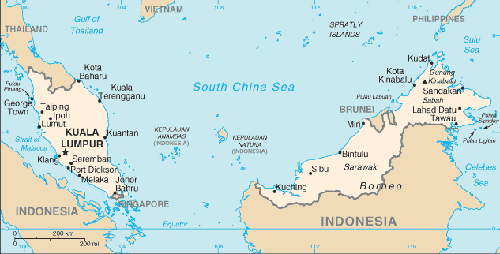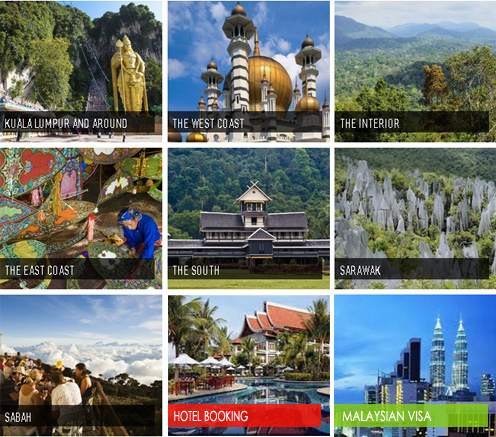|
Peninsular Malaysia: Weather

Set just to the north of the equator, Malaysia enjoys a tropical
monsoon climate. It's pretty much hot and humid with a bit of rain
throughout the year. Even in the middle of dry season don't be
surprised to get a sudden, often very heavy downpour, but it's likely
to be gone as quickly as it arrived.

Split between Peninsular Malaysia and Sabah and Sarawak (on Borneo),
each area remains under the sway of the southwest and northeast
monsoons, while a transitional period between the two delivers less
rainy conditions. It's worth noting that Malaysia sees a fair amount
of rain year round and it's not at all unusual to see a heavy downpour
in the middle of what would be considered "dry season", so the wet
season often seems to just be a slightly wetter dry season. The
exception to this is the east coast of the peninsula, which sees
considerably wetter conditions during the northeast monsoon.
The southwest monsoon runs from roughly May to October, while the
northeast runs from November to March. Adding to the mix is typhoon
season in the Western Pacific from April to November, which can see
inclement weather hitting Sabah and Sarawak at random intervals.
When the southwest monsoon hits from May to October, it brings rain to
the lowlands on the west coast of the peninsula and particularly the
southwest coast between the capital of Kuala Lumpur and Melaka. To the
northern end of the west coast of the peninsula, around Penang and
Langkawi, the rain can be especially heavy in September and October.
While the west coast is getting heavy rain, the east coast of the
peninsula is bathed in sunshine and dry weather. This changes however
when the northeast monsoon blows in between November and March,
bringing with it torrential rain and often flooding along the east
coast of the peninsula. At this time most resorts on the islands along
the east coast of the Malaysian peninsula close up till the rains
ease.
Sabah and Sarawak are affected slightly differently. As with the east
coast of the peninsula, the northeast monsoon brings with it extremely
heavy rain, delivering over half of Sarawak's rainfall for the entire
year. While the entire period from October to March is, well, damp,
January in particular is a very wet time in both Sabah and Sarawak.
The region is less affected by the southwest monsoon but they still
see a fair amount of rain through the rest of the year.

When is the best time to visit Malaysia?
There is no "right" time to visit Malaysia. As with Singapore,
visitors to Malaysia should expect some rain whenever they go.
There are however certain areas that are particularly wet at times and
best avoided then. The eastern coast of Peninsular Malaysia is best
avoided during the northeast monsoon from November to March. This is
the case partly because it will be heaving with rain a lot of the time
and there may be flash floods, but also because most, if not all the
accommodation on the Perhentian Islands, along with the other east
coast islands, will be closed due to bad weather and rough seas.
Sticking with the peninsula, the northern part of the west coast of
Peninsular Malaysia (Penang and Langkawi) can get quite a bit of rain
in September and October. This is less of an issue in Penang, where a
rainstorm is just a good excuse to eat more, than in Langkawi where
visibility for diving is badly affected.
Another area best avoided is Sabah and Sarawak in January when the
rain, even by Borneo standards, is torrential.
The best time to visit the east coast of the peninsula is from April
or May to October, when you can expect calm waters and clear blue
skies (most of the time).
Explore Malaysia

Information About Visa
For Malaysia Visa, Air
Ticket & Tour Packages Contact us
|